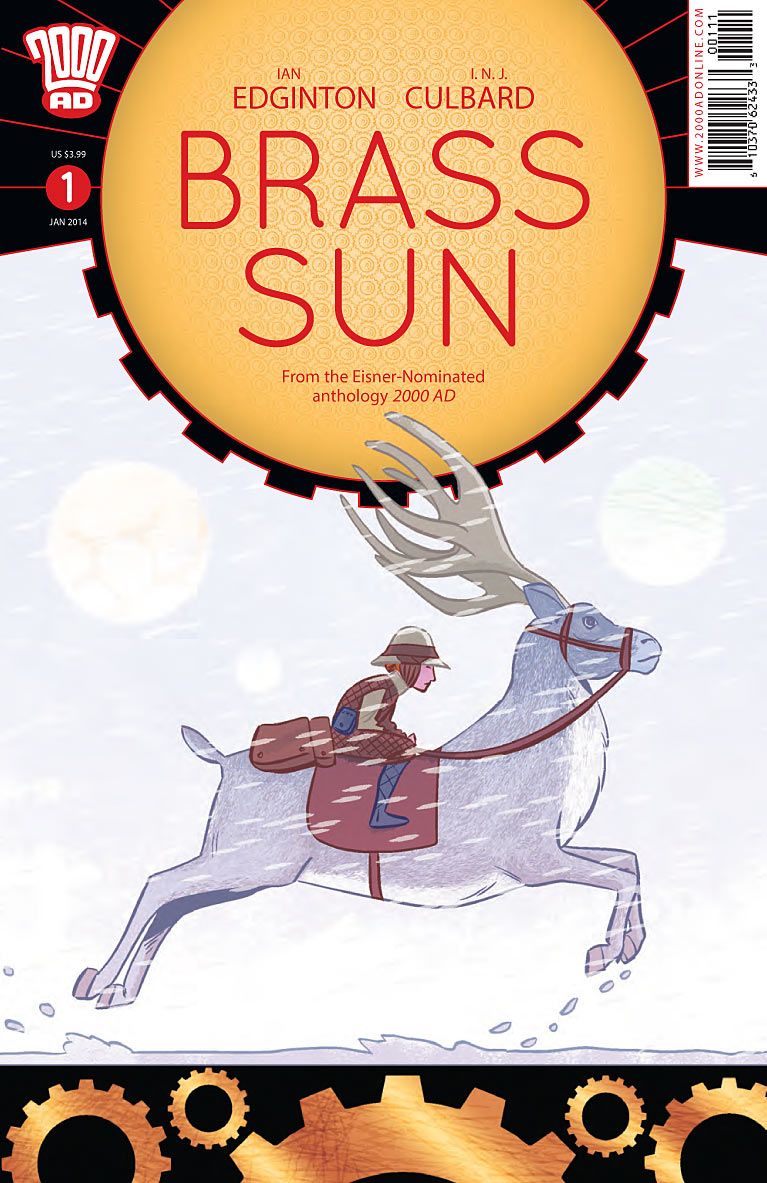2000 AD's sophomore venture into American-style floppies, "Brass Sun," begins its six-issue run with an exquisite first installment. I'll admit, it seemed like a curious choice to follow up the publisher's first floppy -- a sequel to the "Dredd" film called "Underbelly" -- but after reading the first issue I can see why 2000 AD has confidence in this title. "Brass Sun" is set in a beautifully rendered and textured world, and while its protagonist doesn't get much attention in Issue #1, the atmosphere and imagination here are enough to have me quite excited for Issue #2.
"Brass Sun" is set on a dying planet on the outer edge of a real-life orrery. The solar system is slowly freezing, but the religious powers that be refuse to confront the evidence and execute any "heretics" who dare speak of a solution. It's an interesting approach to the religion-quashes-science theme, because while the bishops are very heavy-handed, they live in an orrery, a world which is clearly artificial and must (to my eyes) therefore have a maker. In "Brass Sun," it's the religious who are denying the existence of a 'creator' figure.
The story is marked by many creative variations like this, and it's part of what makes it so appealingly whole and unique. For instance, while people will inevitably sense some steampunk influence in the setting, it eschews the billowing smoke and corsets for bright, intricate cogwork and soaring blue-black buildings. Combined with the monks, falling snow and reindeer riding, it looks like a mash-up of Siberia, art deco and medieval Europe -- or, more honestly, it just looks like itself and its own unique aesthetic.
Culbard's artwork is remarkably clean, so simple and smart that "Brass Sun" reads almost like a children's book or animated film. His layouts both hold the reader's hand and catch the reader's eye, particularly in the opening. The first few pages show the orrery in which Wren's planet, Hind Leg, is located, and then slowly zero in on her planet. This tells the reader, without a single line of dialogue or caption needed, that this is where she lives. In a series that's based on such a strange and complex concept, the art needs to take on some of the work of exposition, and Culbard handles the task beautifully. Many of his techniques are expected, but they're executed with a grace that makes them feel inspired. His linework and colors -- oh, the colors in this book -- bring a softness to the character's faces and surroundings that add to the storybook feel.
As beautiful as "Brass Sun" is too look at it, it's also a lot to take in. So much is revealed in this issue, and the exposition is almost never clumsy. The dialogue can feel too artificially elevated at times -- "would that you were a dolly-headed moppet ignorant of all this doom" -- but those slip-ups are scattered enough that it doesn't detract from my enjoyment of the issue. Edginton has worked so much information into these conversations that I can forgive.
(A last note: while it's a bit mercenary to care, the quality of the paper and the cover in the print edition are stellar.)
"Brass Sun" is a lovely, promising first issue that presents something unique and engaging. It's entirely worth the $3.99.

